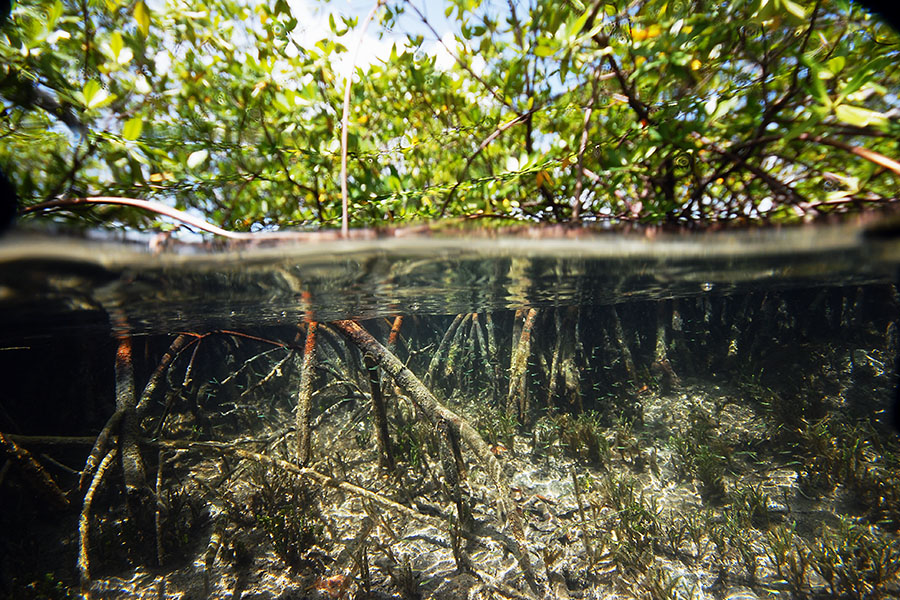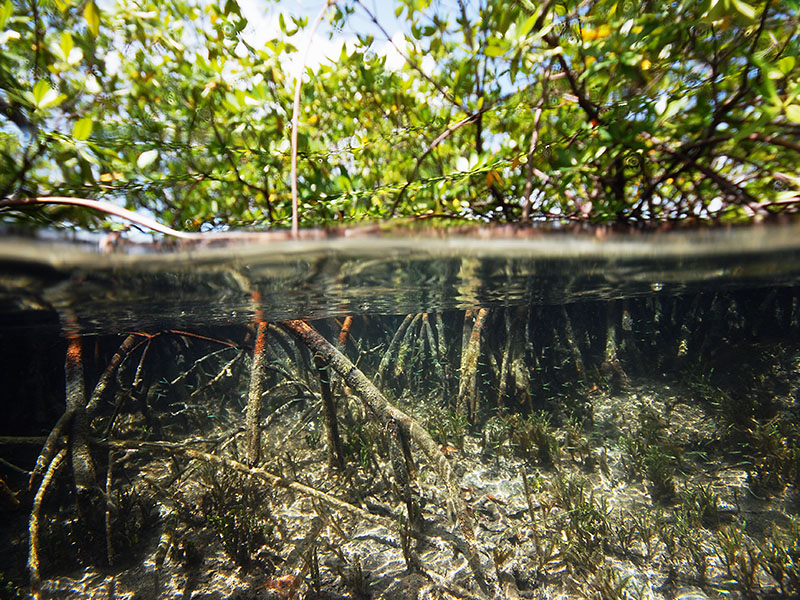 A image by Pierre Yves Pascal exhibits mangroves in the Guadeloupe archipelago of the Caribbean, where experts have found a species of microbes that grows to the size and condition of a human eyelash. The bacterial cells, named Thiomargarita magnifica are so big they are effortlessly seen to the bare eye, hard tips about how large microbes can get. (Pierre Yves Pascal through The New York Moments)
A image by Pierre Yves Pascal exhibits mangroves in the Guadeloupe archipelago of the Caribbean, where experts have found a species of microbes that grows to the size and condition of a human eyelash. The bacterial cells, named Thiomargarita magnifica are so big they are effortlessly seen to the bare eye, hard tips about how large microbes can get. (Pierre Yves Pascal through The New York Moments)
In a Caribbean mangrove forest, researchers have identified a species of microbes that grows to the dimension and condition of a human eyelash.
These cells are the major micro organism at any time observed, 1000’s of periods bigger than a lot more familiar bacteria this sort of as Escherichia coli. “It would be like meeting a different human the dimension of Mount Everest,” claimed Jean-Marie Volland, a microbiologist at the Joint Genome Institute in Berkeley, California.
Volland and his colleagues revealed their examine of the microorganisms, identified as Thiomargarita magnifica, on Thursday in the journal Science.
Researchers when thought microorganisms ended up far too easy to create large cells. But Thiomargarita magnifica turns out to be remarkably elaborate. With most of the bacterial earth but to be explored, it is fully achievable that even bigger, even more sophisticated bacteria are ready to be found.
It has been about 350 decades because Dutch lens grinder Antonie van Leeuwenhoek discovered germs by scraping his teeth. When he put the dental plaque underneath a primitive microscope, he was astonished to see solitary-celled organisms swimming about. For the future three centuries, scientists observed several a lot more kinds of germs, all of which had been invisible to the bare eye. An E. coli cell, for illustration, measures about two microns, or beneath a ten-thousandth of an inch.
Each individual bacterial cell is its individual organism, indicating it can expand and split into a pair of new micro organism. But bacterial cells typically stay collectively. Van Leeuwenhoek’s enamel had been coated with a jellylike film that contains billions of germs. In lakes and rivers, some bacterial cells adhere collectively to type tiny filaments.
We people are multicellular organisms, our bodies created up of about 30 trillion cells. Whilst our cells are also invisible to the bare eye, they are usually significantly larger sized than all those of microbes. A human egg mobile can arrive at about 120 microns in diameter, or 5 1-thousandths of an inch.
Other species’ cells can grow even greater: The green algae Caulerpa taxifolia provides blade-shaped cells that can increase to a foot prolonged.
As the gulf among modest and huge cells emerged, researchers seemed to evolution to make feeling of it. Animals, plants and fungi all belong to the very same evolutionary lineage, termed eukaryotes. Eukaryotes share a lot of variations that help them establish huge cells. Scientists reasoned that without these adaptations, bacterial cells had to remain small.
To start, a massive cell demands bodily guidance so it does not collapse or tear aside. Eukaryote cells consist of rigid molecular wires that functionality like poles in a tent. Microorganisms, while, do not have this mobile skeleton.
A massive cell also faces a chemical challenge: As its quantity raises, it takes for a longer period for molecules to drift all over and fulfill the suitable partners to carry out specific chemical reactions.
Eukaryotes have evolved a resolution for this trouble by filling cells with little compartments in which distinctive varieties of biochemistry can consider area. They preserve their DNA coiled up in a sac referred to as the nucleus, along with molecules that can go through genes to make proteins, or the proteins deliver new copies of DNA when a mobile reproduces. Each and every mobile generates gasoline within pouches identified as mitochondria.
Bacteria do not have the compartments discovered in eukaryote cells. Without a nucleus, each individual bacterium commonly carries a loop of DNA floating freely close to its inside. They also do not have mitochondria. As a substitute, they typically produce gas with molecules embedded in their membranes. This arrangement performs effectively for small cells. But as the volume of a cell improves, there is not ample room on the surface of the mobile for more than enough gasoline-building molecules.
The simplicity of germs appeared to demonstrate why they had been so little: They just did not have the complexity necessary for acquiring huge.
Having said that, this conclusion was produced also hastily, in accordance to Shailesh Date, founder of the Laboratory for Investigation in Intricate Techniques in Menlo Park, California, and a co-writer with Volland. Scientists produced sweeping generalizations about germs right after studying just a little portion of the bacterial environment.
“We have just scratched the floor, but we’ve been really dogmatic,” he explained.
That dogma began cracking in the 1990s. Microbiologists uncovered that some germs have independently advanced compartments of their own. They also uncovered species that ended up noticeable to the naked eye. Epulopiscium fishelsoni, for illustration, arrived to gentle in 1993. Dwelling inside of surgeonfish, the micro organism grows to 600 microns prolonged — much larger than a grain of salt.
Olivier Gros, a biologist at the University of the Antilles, uncovered Thiomargarita magnifica in 2009 although surveying the mangrove forests of Guadeloupe, a cluster of Caribbean islands that are section of France. The microbe appeared like miniature parts of white spaghetti, forming a coat on lifeless tree leaves floating in the drinking water.
At first, Gros did not know what he experienced uncovered. He assumed the spaghetti may well be fungi, very small sponges or some other eukaryote. But when he and his colleagues extracted DNA from samples in the lab, it discovered they were being micro organism.
Gros joined forces with Volland and other experts to appear more carefully at the strange organisms. They wondered if the germs have been microscopic cells caught together into chains.
That turned out not to be the scenario. When the researchers peered inside of the bacterial noodles with electron microscopes, they understood each individual just one was its personal gigantic cell. The ordinary mobile measured about 9,000 microns long, and the most significant was 20,000 microns — lengthy adequate to span the diameter of a penny.
Within the cells of Thiomargarita magnifica, the researchers have found out a strange, difficult structure. Their membranes have several various kinds of compartments embedded in them. These compartments are as opposed to those in our possess cells, but they may perhaps make it possible for Thiomargarita magnifica to mature to large measurements.
Date stated that there might be more large bacteria waiting to be found, possibly even bigger than Thiomargarita magnifica.
“How significant they can get, we never actually know,” he said. “But now, this bacterium has confirmed us the way.”
Examine out our anniversary special discounts on subscriptions, upto 50% off the web page price, absolutely free digital entry with print. Use coupon code : ANN2022P for print and ANN2022D for digital. Simply click here for details.

©2019 New York Moments News Assistance




